If you have a car, you almost certainly have a steering wheel. If you have a website, you probably have an About page. But do you really know how to use it well?
Many online stores drastically underutilize their About pages. It’s the one place on your site that people approach with a degree of trust. They’re thinking about spending money with you, and they visit your About page looking to trust you.
Once you establish trust, you can nudge visitors to take the next step — buy a product, watch a video, take a quiz, sign up for a free trial — but that first step is key.
How can you make sure your About page is doing its job? Here are the five primary goals you’re aiming for:
- Make your visitors feel welcome.
- Position yourself as likable and trustworthy.
- Demonstrate your ability to solve problems and answer questions.
- Be brief.
- Give them reasonable next steps to take.
1. Make your visitors feel welcome
↑ Back to topVisitors don’t come to your site to be welcomed with text; they come to feel welcomed. So avoid page titles like “Welcome to our website!” — they’re ineffective. They’re empty words. They don’t evoke an emotion, provide any real connection, or describe key facts about you.
Your site visitors are busy. They move, think, and act quickly. Phrases like this are distractions; they don’t add real value. (This same principle applies to the rest of your site — don’t waste people’s time telling them things they don’t need or want to hear.)
Here’s what you should do instead:
Use photos of yourself and key staff members
Photos humanize your business and help you connect to customers in a way that’s often lacking online. You want to build the same feeling of community that many physical stores offer. Unless there’s a particular business reason for you to be anonymous, embrace the visibility!
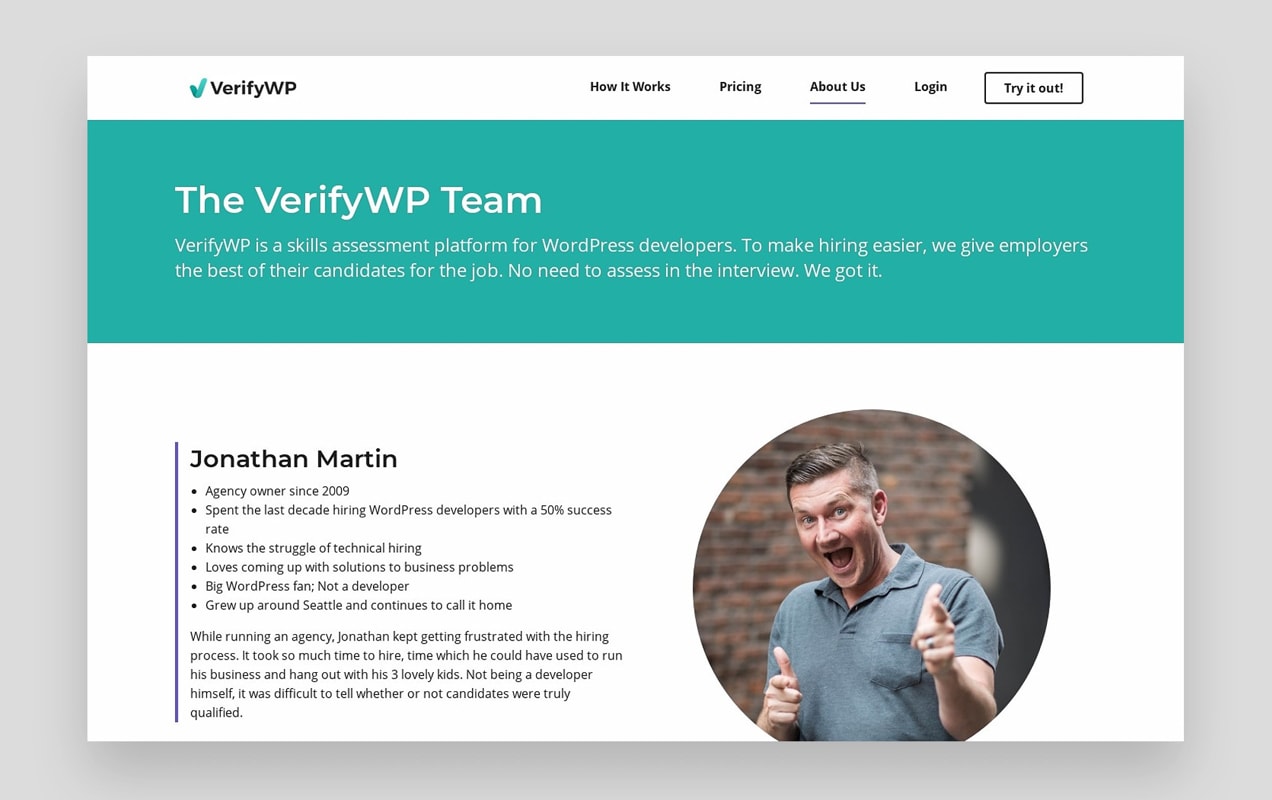
VerifyWP not only shares engaging, personable photos of their team, they also share bios and fun facts that relate directly to audience pain points. It positions them as interesting, caring people, creating a virtual relationship customers.
Call out your audience and what you provide
No business sells to everyone. Your target audience might be defined by demographics, but also by your products and the problems they solve. Your About page is a place to clearly identify that audience and what you’re offering them, helping visitors understand quickly whether you’re a fit.
Start by incorporating some details into your headline. If you sell health food, your audience is people who want to be healthy and your products are tools that help them achieve their goals. A headline like, “The Online Food Store for Health-Conscious Consumers” clearly identifies who this store serves and what it offers. A customer who cares about their health will understand they’re in the right place and will explore what you have to offer.
2. Position yourself as likable and trustworthy
↑ Back to topA relatable headline and photos of you and your team build trust and likability, but words are also important. Here’s how to write an About page that builds credibility:
Be real
Use easy-to-read language that sounds like a real person wrote it. Jargon, buzzwords, and graduate-level technical phrases, make readers zone out and click away, unimpressed and unengaged. This is also true for text that just sounds like marketing.
Instead, be human. Let emotion into your writing, show enthusiasm. Don’t hide your excitement about how your product solves problems. If your offerings are more technical, describe the nitty-gritty details and your passion for what they do to educate your readers while keeping their attention.
Tell your story
Business storytelling is one of the most sought-after marketing skills, because your history builds trust and makes you likable. People want to learn why you started your company, the values that drive you, how you came up with your product, and the challenges you had to overcome to turn it into reality.
Describe your moment of inspiration in detail, because that’s how you found the answer to your customers’ problems. Talk about your own problem solving, and share how your product makes life faster, simpler, easier, more fun, more delicious, more exciting, more convenient, or more relaxing.
Here are a few points to include:
- Moments of triumph, failure, and disappointment.
- What you learned about yourself.
- What you learned about others.
- How your beliefs and values were shaped by your journey.
Beliefs and values are critical to your story and About page because they’re about your target audience. Your potential customers all shares a problem you can solve, and you want them to believe in what you offer.
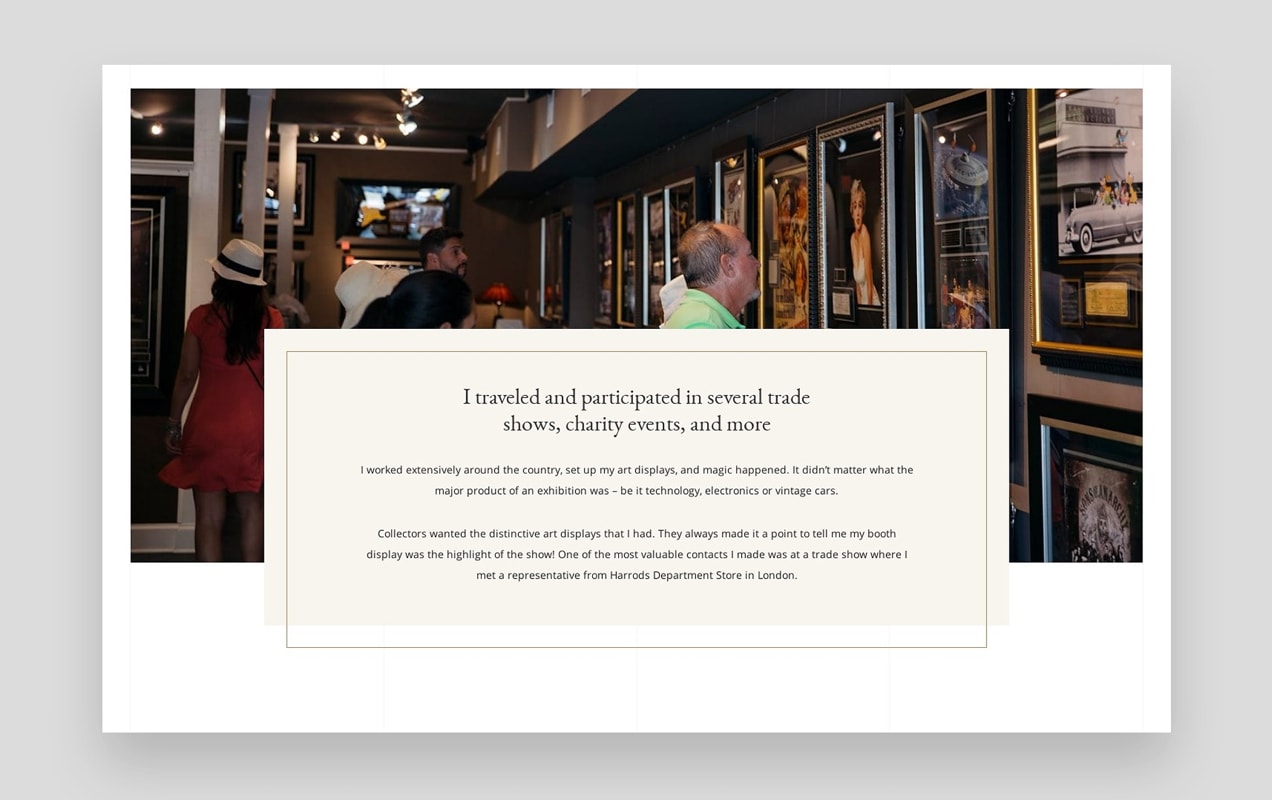
Millionaire Gallery shares their story in a very visual, passionate way, writing about their inspiration and sharing both photos and videos of their history.
3. Demonstrate your expertise
↑ Back to topThis begins with your story. What values drive your product and customer service?
A clothing dealer who locally sources all of their products should expand on why that’s so important and how it impacts quality. A software company can explain why they offer premium-level support or an extended warranty, even though it costs them more.
Every company, every product, and every service is driven by a set of values, which are expressed most succinctly in your mission statement. You’ve given them that — now, flesh it out. In other words, what is your reason for doing business? You could have picked anything, but you chose this. Why? Sharing your inspiration often inspires customers to join your mission.
Highlight your unique selling proposition
Your unique selling proposition (USP) is what sets your product or service apart from everyone else’s. Why should people do business with you instead of your competitors?
Your USP could come from the quality of your product components, how you developed your processes, your customer service, how you cut costs without sacrificing quality, or your personal expertise or authority.
One of the most famous USPs in history is, “Fresh hot pizza delivered to your door in 30 minutes or less, guaranteed.” This was the Domino’s Pizza USP during their early years and is the reason they became a national brand in such a short time. Their USP didn’t highlight the quality of the pizza. It highlighted speed of delivery, guaranteed or the pizza was free. No one else in the industry had anything like it. Their USP was disruptive.
Testimonials and credentials
Include thoughtful testimonials on your About page. If customer service is key to your business, include praise for your excellent support. If you write about the problem your product solves, share a customer story about how helpful your product was.
To highlight industry authority, mention media appearances, speaking engagements, books you’ve written, and other credentials. Show that you’re not like all the others.
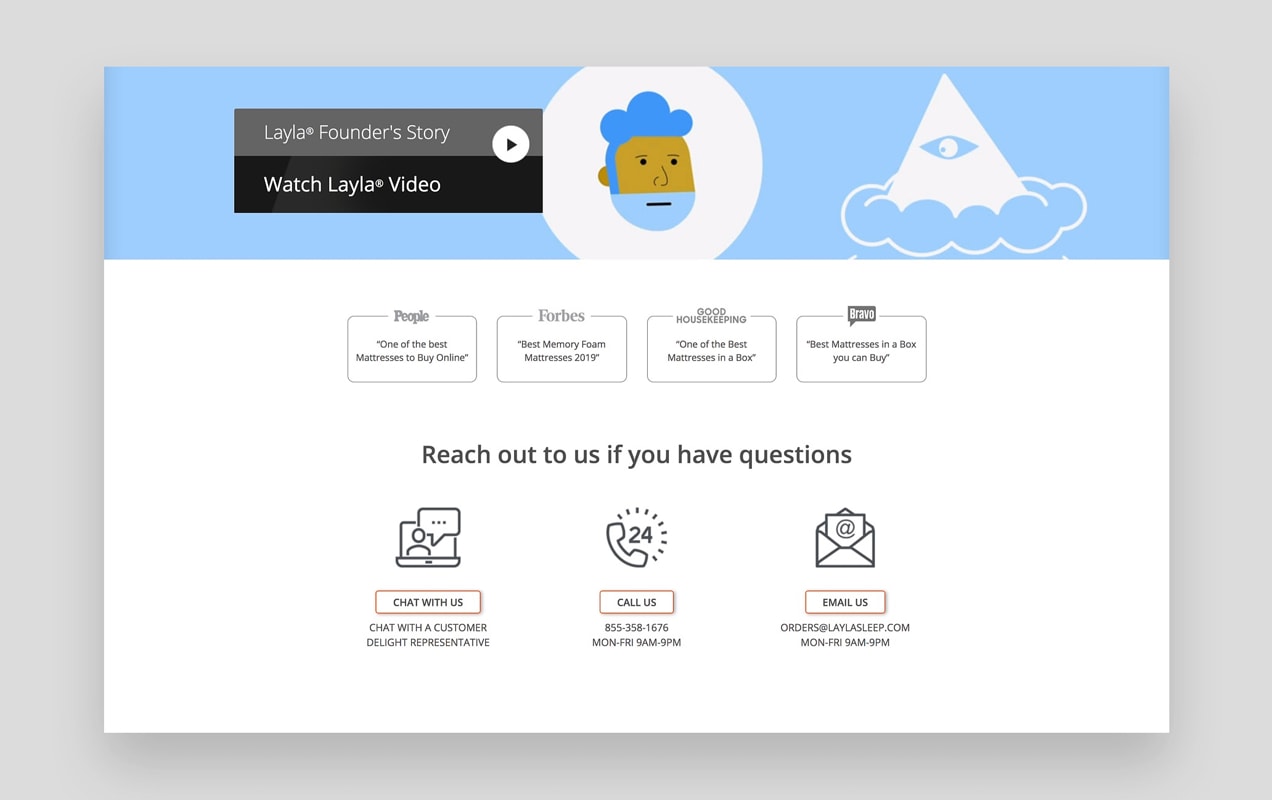
Layla Sleep does a great job demonstrating expertise. They discuss what makes their mattresses different, list accolades from reputable companies, and share reviews from dozens of customers that can be filtered by topic.
4. Be brief
↑ Back to topInclude relevant links and contact information to keep your About page from becoming too long. It may seem like you need to write 3,000+ to cover all the topics we’re discussing, but you can write an effective About page with fewer than 500 words.
When you write about the values that drive your customer service, for example, link to another page with more details. When you describe the problems your product solves and how you discovered the solution, link to one of your main product pages.
Being brief also means being clear. Avoiding jargon and buzzwords and think about whether idioms and slang are helpful or confusing to ensure that you’re understandable.
5. Offer reasonable next steps
↑ Back to topAlways include a CTA, or “call to action,” on your About page. You want readers to stay engaged, act on the trust you’ve established, and take the next step. Tell them exactly what that step is. Examples of CTAs include:
- Sign up for our newsletter.
- Schedule a free consultation.
- Activate your free trial.
- Try out your first product.
- Save 15% on your first purchase.
- Explore our products.
- Read this article.
Can you have more than one call to action? Yes! But make sure to mix them into your content rather than grouping them together at the end. You might insert your newsletter signup call to action in the middle of your page, and then a coupon or free trial offer at the end.
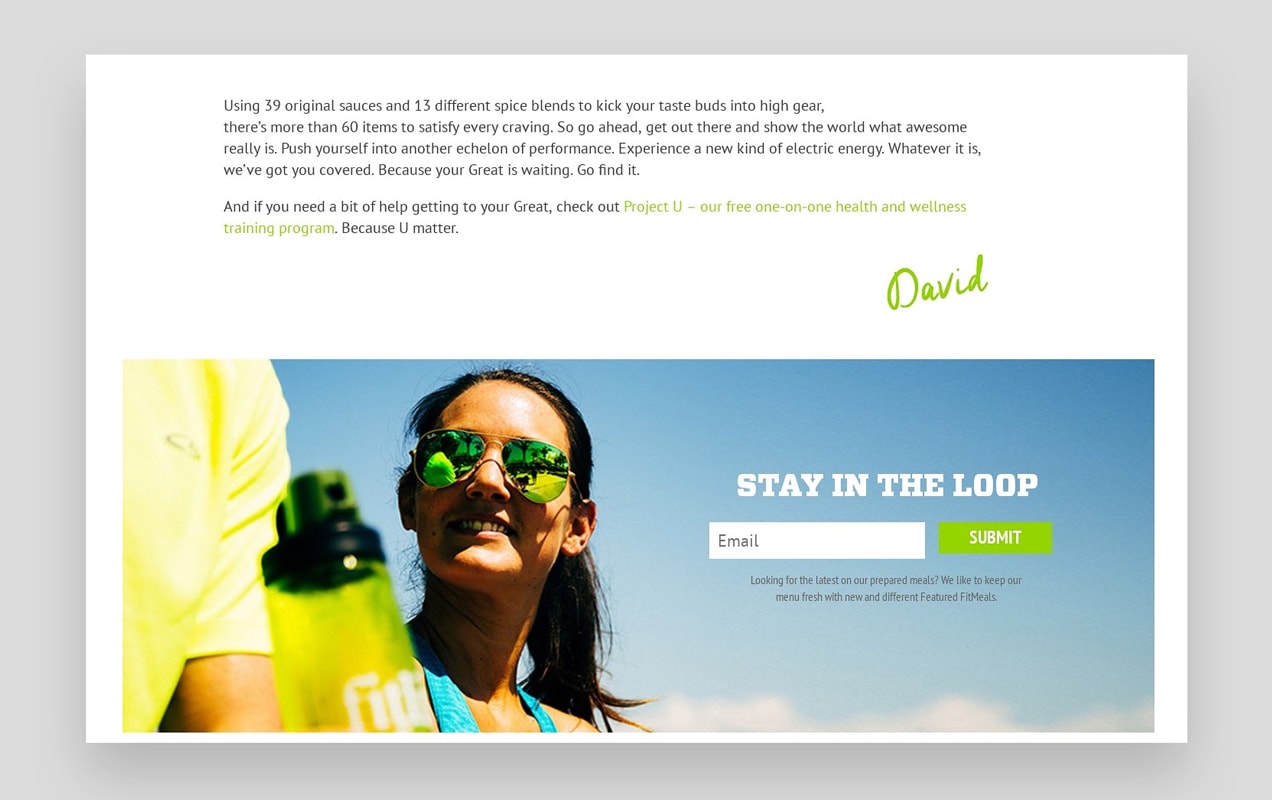
Fitlife Foods includes several calls to action on their about page. They link to their menu in one section, mention their wellness training in another, and conclude with an email signup form.
Focus on your story
↑ Back to topWhen writing your About page, the primary focus is on your story and how you can help your customers solve a problem. They want to know if you have what they’re looking for and if they can trust you to deliver.
If you succeed, you’ll be one step closer to winning a loyal patron. See some great ecommerce website design examples to inspire your next move!
About

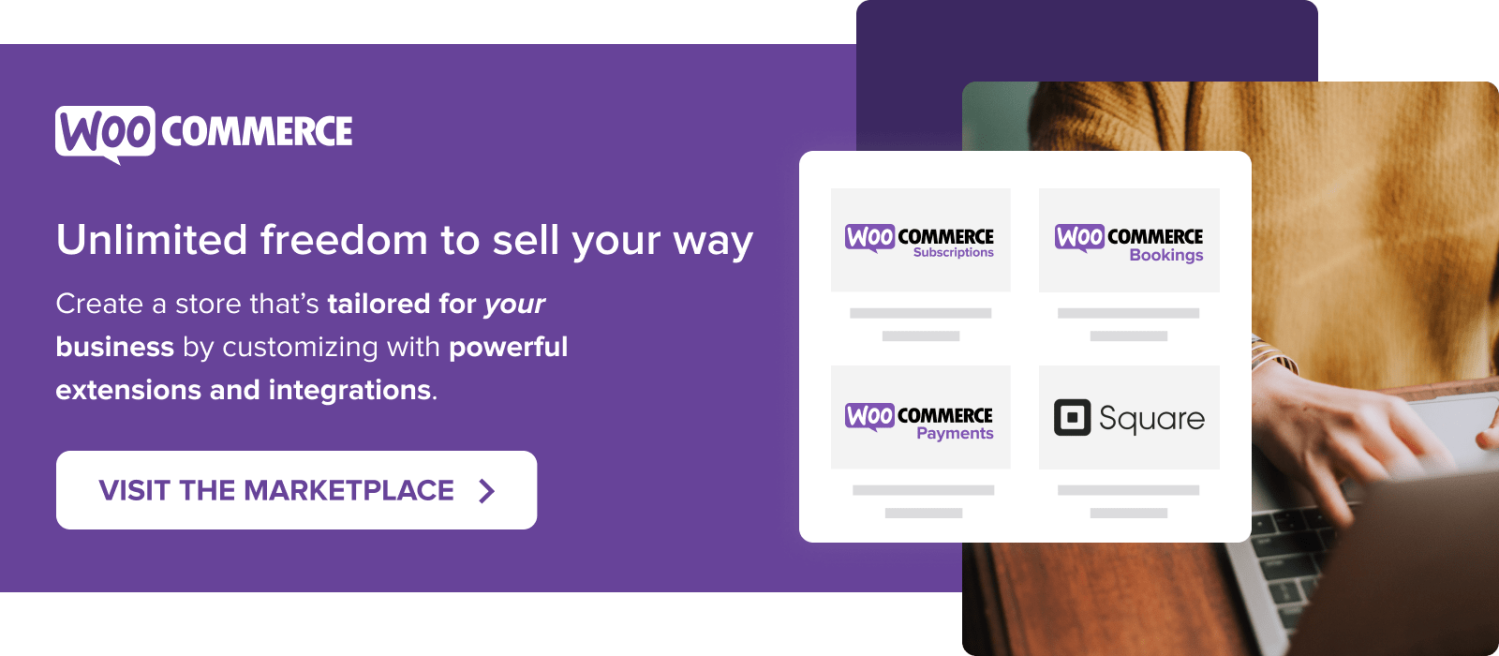

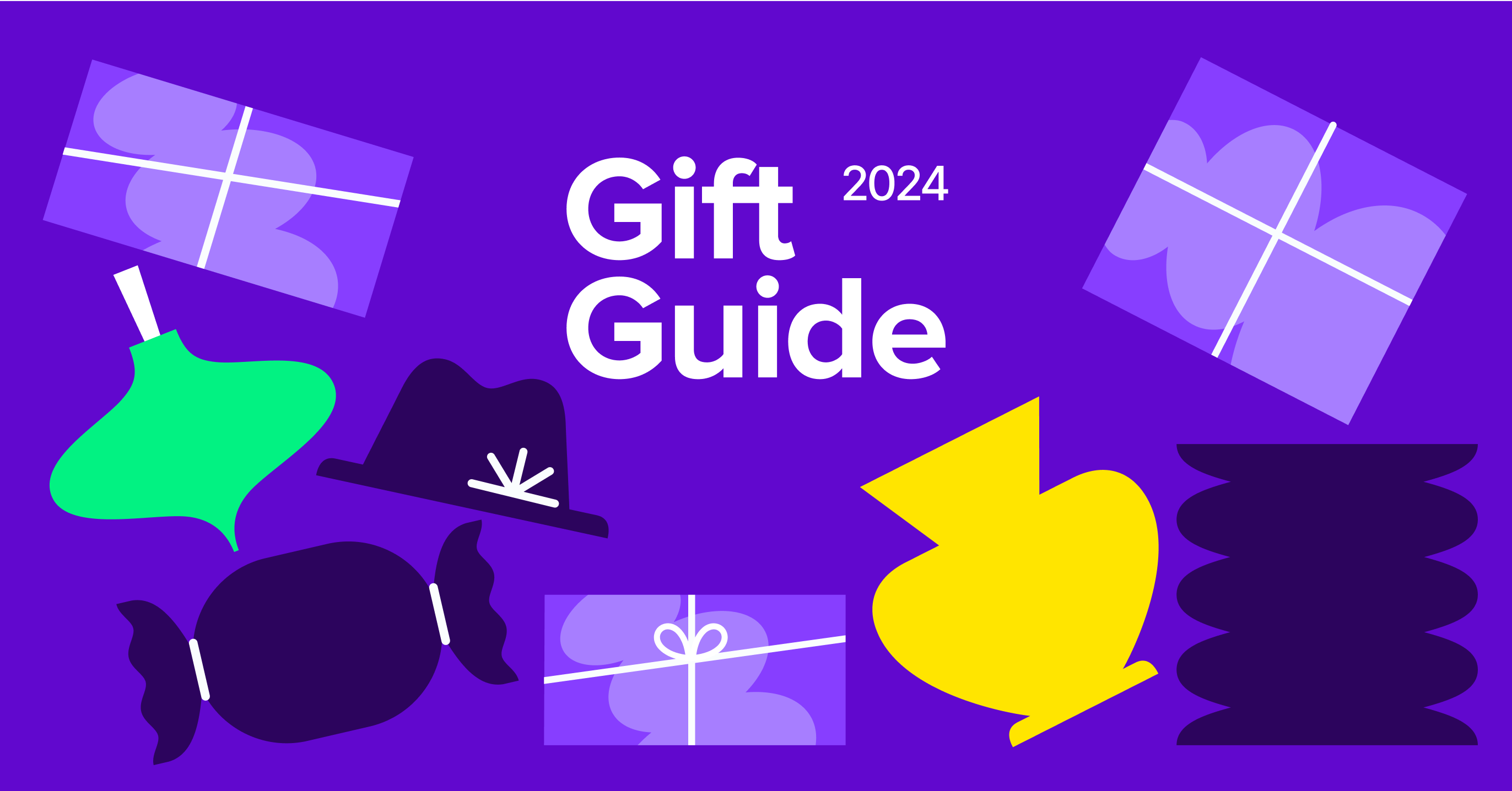

I think giving brief and a little bit detail about the page would also work. Also, suggesting some relevant info will help!
You got it, Helena! Thanks for reading 🙂
Totally agree a little background about why you do what you do and/or sell how you standby your products eg rigorously tested.